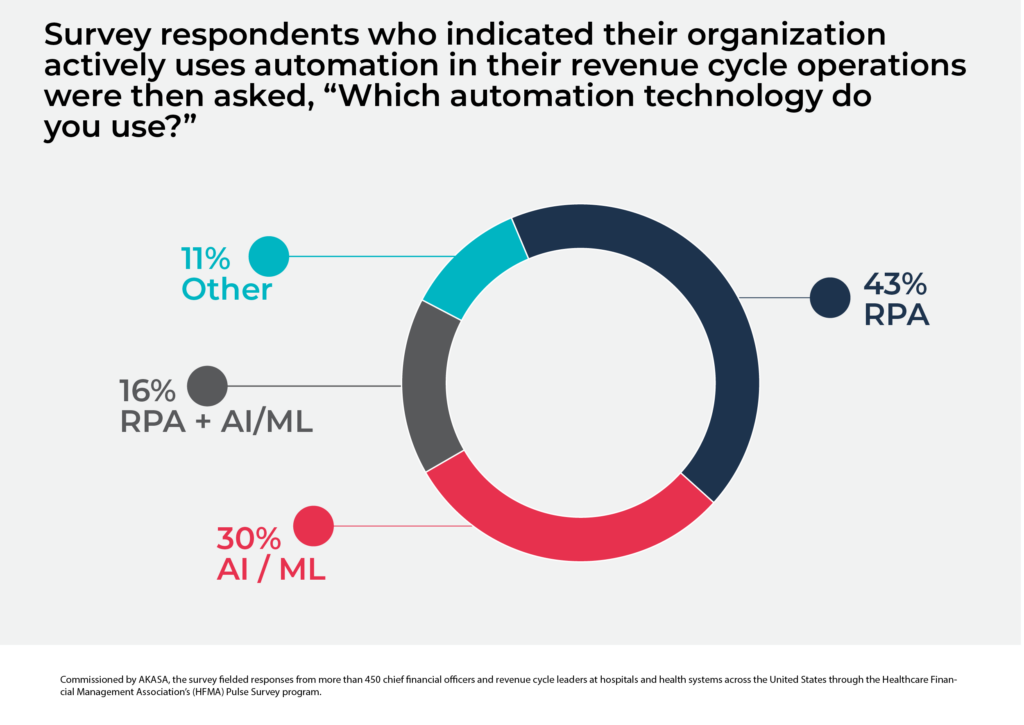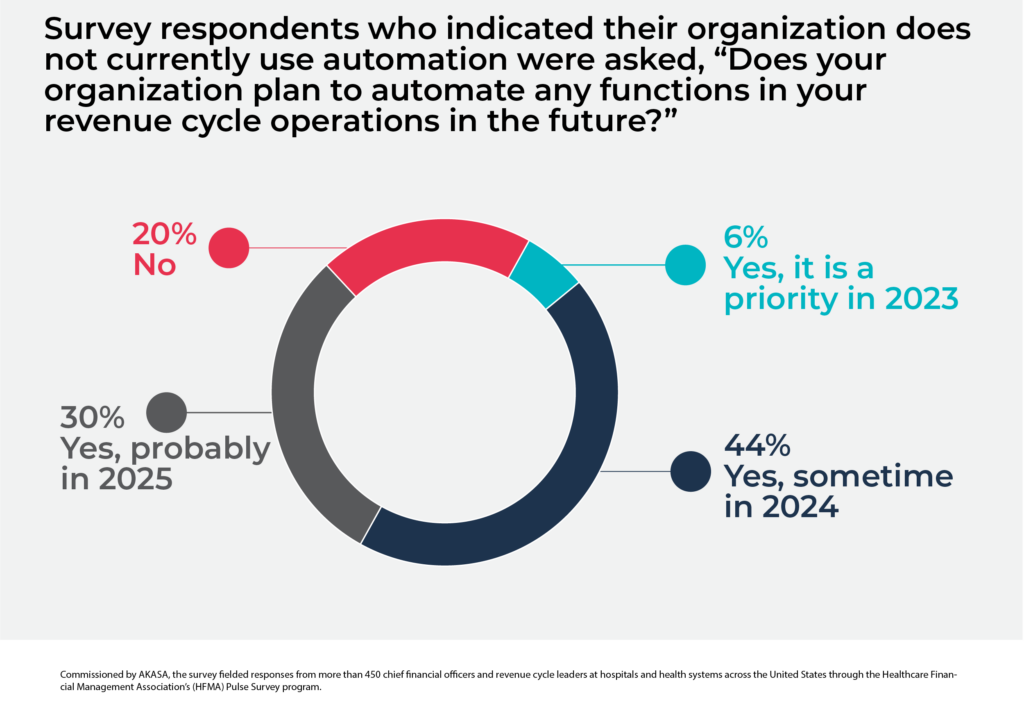46 percent of these same organizations use some form of AI
South San Francisco, Calif. — December 20, 2023 — AKASA, the leading developer of AI-powered automation for the revenue cycle, released new survey results showing that 74 percent of healthcare organizations are actively automating some portion of their revenue cycle operations. Additionally, 46 percent of these same organizations report using some form of AI.
For those survey respondents who indicated that their organizations do not currently use automation in their revenue cycle operations, 80 percent reported it is a priority to do so within the next two years — by the end of 2025.
Financial leaders at health systems and hospitals across the U.S. were asked the following questions:



“Automation is no longer simply an option in the revenue cycle — it is an imperative,” noted Amy Raymond, senior vice president of revenue cycle operations and deployments at AKASA.
“Technology has never been more capable of addressing the challenges of revenue cycle operations than it is today. Leaders now have automation options that can effectively harness the power of AI and large language models (LLMs) for everything from addressing prior auth holistically to preventing and resolving denials. These advanced technologies are driving real results, including increasing revenue yield, reducing costs, and enabling teams to focus on the work that provides the most value to the organization.”
Source
Commissioned by AKASA, the survey fielded responses from more than 450 chief financial officers and revenue cycle leaders at hospitals and health systems across the United States through the Healthcare Financial Management Association’s (HFMA) Pulse Survey program.
About AKASA
AKASA is the leading developer of AI-powered automation for the revenue cycle. AKASA scales human intelligence with leading-edge AI and ML to deliver comprehensive automation for complex workflows. The result is an integrated solution that reduces operating costs, frees up staff to do the most valuable work, and helps health systems allocate resources to where they matter most.

Tiffany Smith is the senior director of content and communications at AKASA. A former magazine editor, she has more than 20 years of experience in content, across healthcare, higher education, and finance, among others.

